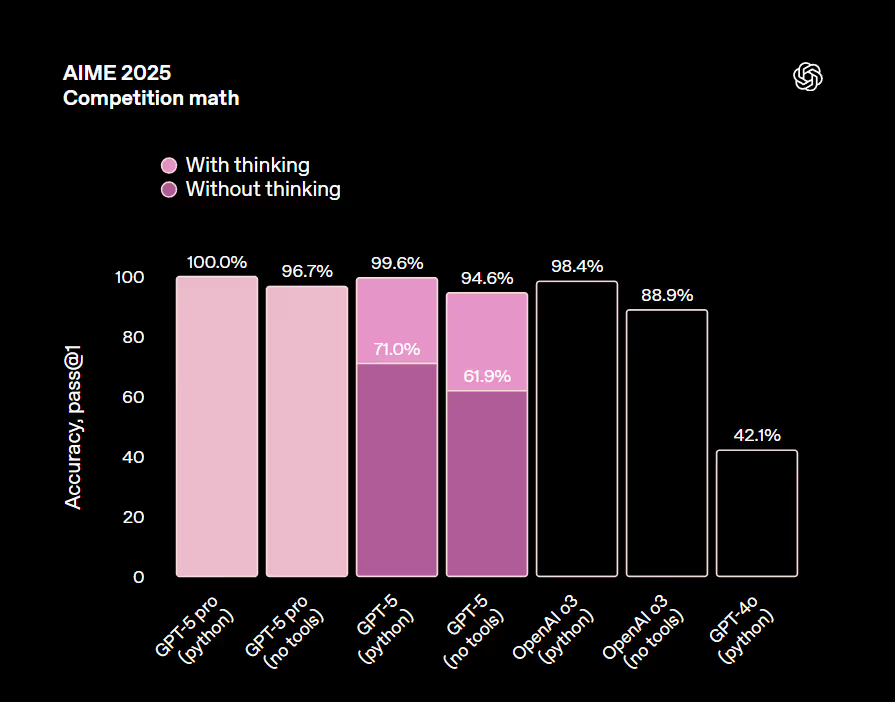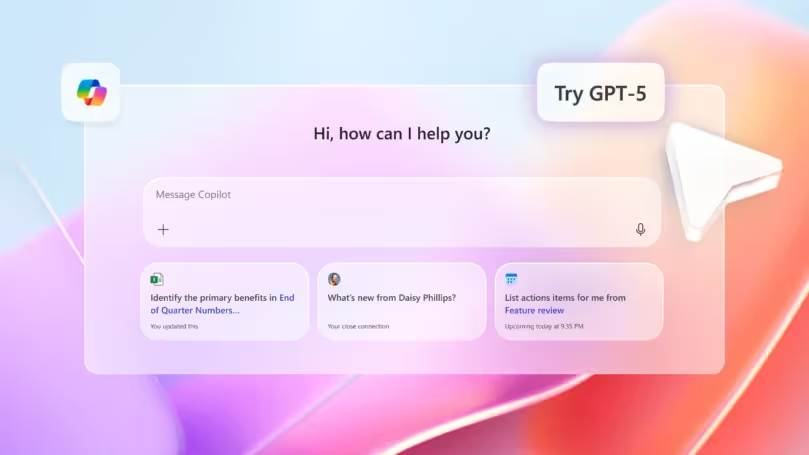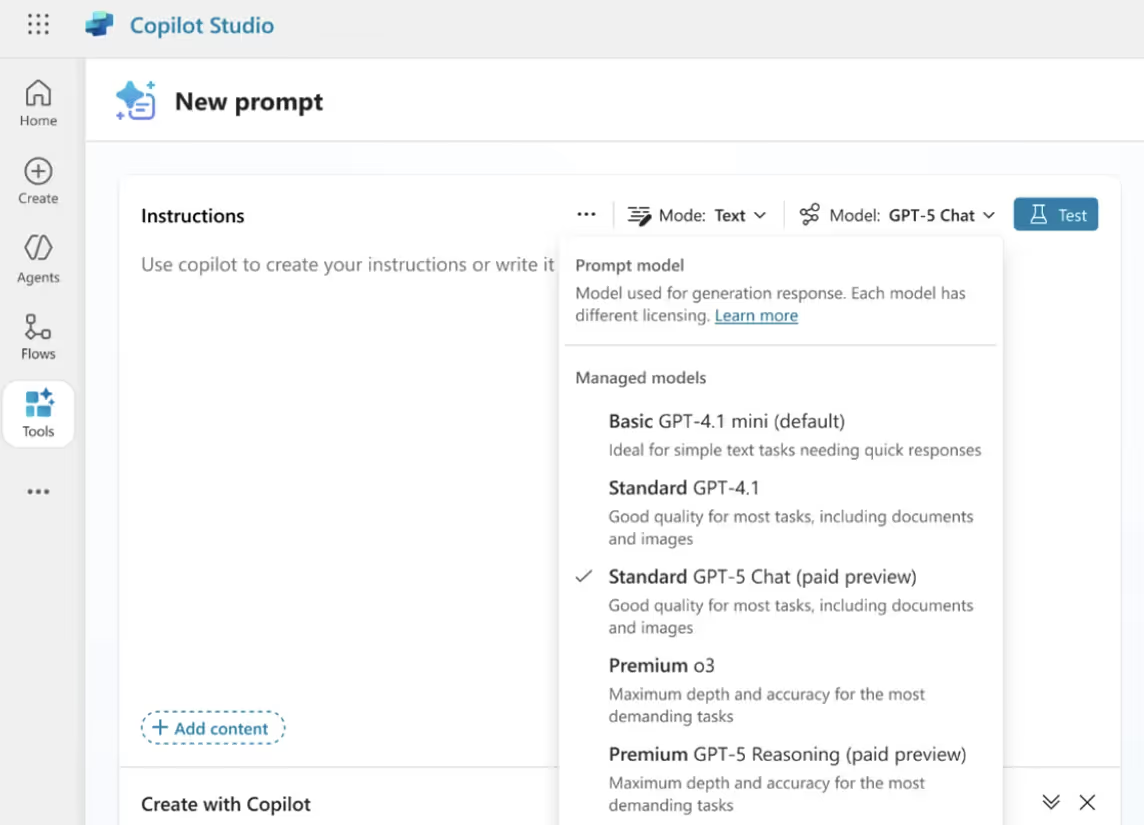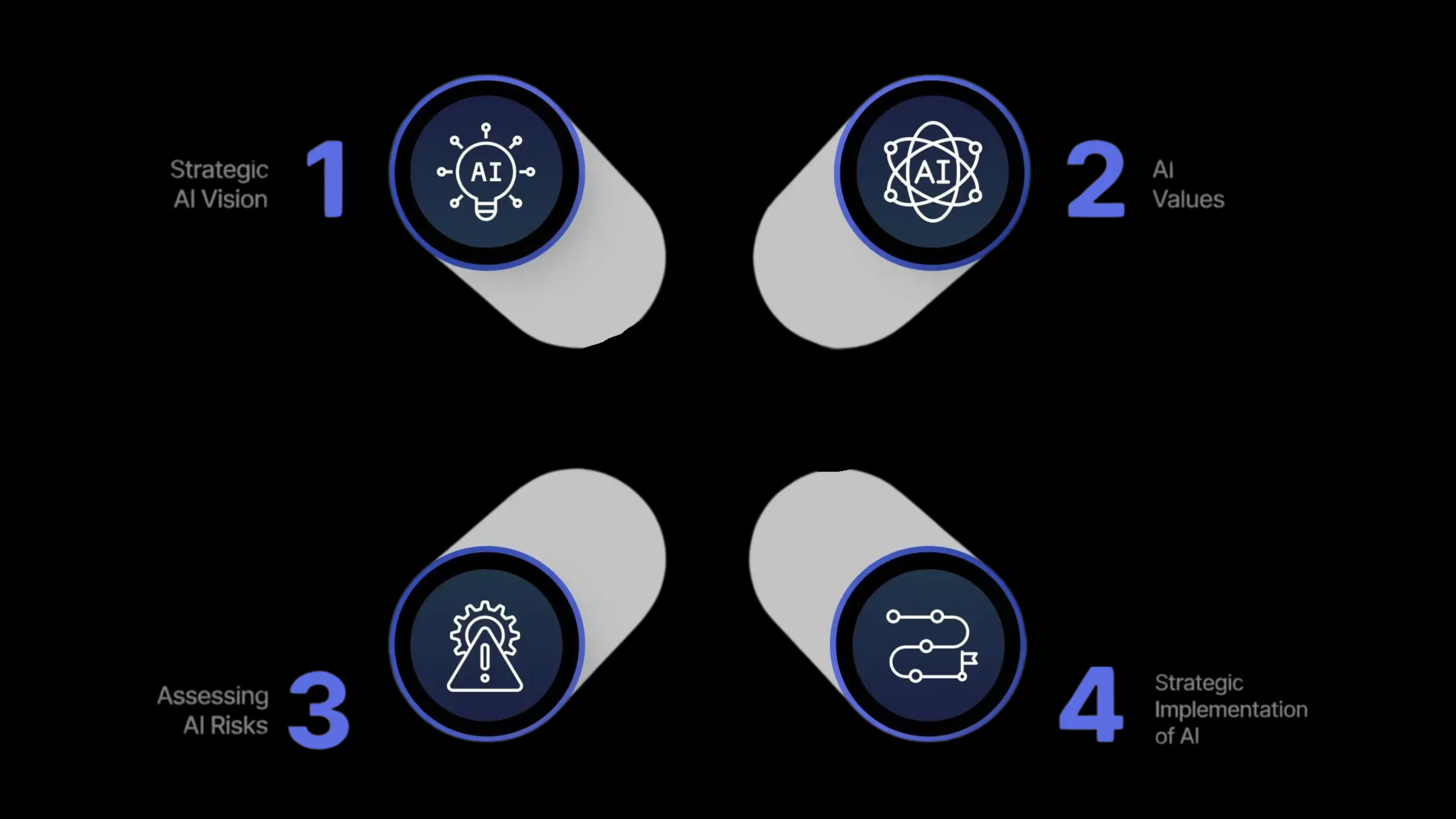
GPT‑5: The AI Leap Your Business Can’t Afford to Miss

.avif)


.avif)
The countdown is over, OpenAI’s GPT‑5 has arrived, and it represents a massive jump in capability that’s turning heads in boardrooms worldwide. If you’re a business leader wondering why every industry insider is buzzing about GPT‑5, here’s the bottom line: GPT‑5 is smarter, faster, and more adaptable than anything before it. We’re talking about an AI that can think through complex problems like a seasoned expert, whip up solutions in seconds, and process mind-boggling amounts of information without breaking a sweat. In short, GPT‑5 has the potential to supercharge your organization’s productivity and innovation, and it’s here right now.
What makes GPT‑5 such a leap forward? For starters, it blends raw power with clever flexibility. This model actually knows when to speed through a simple task and when to slow down and dig deeper for a complex one. Think of it as having two brains in one: a quick, agile mind for routine work and a deep, analytical mind for the hard stuff. GPT‑5 uses a smart real-time “router” to switch between these modes on the fly. The result is an AI that answers trivial questions instantly, but will take its time reasoning through a challenging problem to give you a detailed, well-thought-out solution. It’s like having an intern and a PhD consultant in the same chair – and it knows exactly when you need which.
GPT‑5 also boasts a jaw-dropping memory and context capacity. Early users report it can handle prompts and datasets that are orders of magnitude larger than what GPT‑4 could juggle – we’re talking hundreds of thousands to even a million words in context at once. Imagine feeding your AI assistant an entire corporate policy manual or years of financial data in one go, and getting coherent, insightful analysis back. That’s now a reality. This unprecedented context window means GPT‑5 can maintain lengthy, nuanced conversations and analyze huge documents without losing track of details. For businesses, that means far less time spent piecemeal feeding information and far more value out of a single AI interaction.

Perhaps most importantly, GPT‑5 is more accurate and trustworthy than its predecessors. OpenAI has dramatically reduced the “hallucinations” (made-up facts) that previous models sometimes produced. The model is better at following instructions to the letter and not going off-script, and it’s less likely to just tell you what it thinks you want to hear. In practice, that means when you ask GPT‑5 for critical information – whether it’s a legal summary or a market analysis – you get a reliable response grounded in facts. This is huge for organizations that need consistency and truth from their AI tools. GPT‑5’s creators even emphasize how it behaves more like an “active thought partner” now, asking clarifying questions and double-checking ambiguity rather than spitting out dubious answers. It’s an AI you can have a conversation with about a tough problem, and it will actually reason with you.
All these breakthroughs aren’t just tech world bragging rights – they translate into real business impact across sectors. GPT‑5 isn’t an academic novelty; it’s a practical tool that can drive tangible results. Here are a few ways GPT‑5’s advancements can turbocharge work in any industry:
GPT‑5 has been described as having PhD-level expertise at your fingertips. That means whatever question you throw at it – be it a complex financial modeling query, a nuanced HR policy dilemma, or a technical IT troubleshooting ask – GPT‑5 can deliver an informed, high-level answer. It’s like instantly consulting an expert in any field. This can radically speed up decision-making and problem-solving in your business. Instead of waiting days for a specialist’s report, GPT‑5 can give you a solid first pass in minutes.
Companies are drowning in data, but making sense of it is a massive challenge. GPT‑5’s expanded context means it can analyze huge data sets or lengthy reports in one go. Feed it your sales data from the last five years, and it can highlight trends and anomalies. Give it a 100-page market research report, and it will summarize key points and even suggest strategic moves based on the findings. Business leaders can leverage this to uncover insights that were previously buried in spreadsheets and PDFs, driving smarter strategies with less manual grunt work.
The everyday tasks that eat up your team’s time – drafting emails, writing reports, creating presentations, coding simple apps – GPT‑5 tackles these faster and better. It can draft a polished business proposal or a marketing blog post from just a rough outline you provide. It can translate a concept into a working snippet of software on demand (one tech CEO called it “software on demand” because GPT‑5 can build entire programs from a simple prompt). Your employees suddenly have an AI assistant that never clocks out, handling the busywork and freeing your human talent to focus on high-level creative and strategic tasks. The result? Productivity gains that directly hit the bottom line.
Need to figure out the optimal supply chain plan amid dozens of variables? Or perhaps brainstorm a product launch strategy with multiple constraints and market inputs? GPT‑5’s advanced multi-step reasoning shines here. It can take in an ambiguous, complex scenario and break down a step-by-step solution or plan. It won’t just give a surface answer; it will consider context, ask follow-up questions if needed, and deliver a thoughtful game plan. Businesses can use this capability for scenario planning, risk assessment, and any challenge that normally requires assembling a task force of analysts. GPT‑5 is essentially a strategist that can augment your team’s thinking process, ensuring no angle is missed.

Every sector stands to benefit. In finance, GPT‑5 can digest entire financial models and balance sheets to provide risk analyses or forecast scenarios, helping analysts make quicker decisions. In healthcare, its improved understanding and factual accuracy mean it can assist doctors and researchers by synthesizing medical literature or even flagging potential concerns in patient data (always with a human in the loop, of course). In retail, it could analyze consumer feedback at scale and help generate insights for improving customer experience, or optimize inventory by processing sales patterns and supplier data together. Manufacturing teams can have GPT‑5 analyze machine logs and maintenance reports to predict equipment failures or suggest efficiency tweaks. And for software development across all these industries, GPT‑5 is a coding wizard – it can help developers generate and debug code, or even allow non-developers to create simple applications through natural language (imagine telling the AI what you need, and it builds a prototype app for you). The bottom line is that GPT‑5’s versatility means no matter your field – be it law, education, logistics, entertainment – this AI can plug into your workflows and start adding value.
In essence, GPT‑5 is a force multiplier for human talent. It won’t replace your people, but it will make your people far more effective. It’s the colleague who works 24/7, never forgets a detail, and learns insanely fast. Companies that leverage these abilities stand to leap ahead in innovation and efficiency. Those that don’t… well, they risk being left in the dust as competitors seize the AI advantage.
So, GPT‑5 sounds amazing, but how do you actually get it into the hands of your team, safetly? This is where Microsoft has pulled a brilliant move, turning its close partnership with OpenAI into a serious competitive edge. GPT‑5 is now integrated directly into Microsoft’s Copilot, and it became available the very day GPT‑5 was announced.

Why is this a big deal? Microsoft 365 Copilot is the AI baked into tools like Word, Excel, Outlook, Teams, and more – it’s like a helpful AI friend living in your everyday work apps. With GPT‑4, Copilot could do impressive things like draft emails or summarize meetings. But with GPT‑5 under the hood, Copilot just graduated from assistance to brilliance. Microsoft’s integration uses that two-brained “fast vs. deep” approach automatically. If you ask Copilot something straightforward (“Schedule a meeting next week with the sales team”), it responds almost instantly using a lightweight model. But ask it something complex (“Analyze this 30-page quarterly report and highlight the biggest risks and opportunities for our strategy, then draft an email to the executive team summarizing your findings”), and Copilot will quietly route the task to GPT‑5’s deeper reasoning engine. A little time passes, and out comes a detailed, context-aware answer that addresses exactly what you need – plus the email draft to boot. No switching modes or manual choices needed. The AI figures it out for you. This kind of seamless intelligence means every user, from your HR coordinator to your CFO, gets optimal AI support tailored to their task in the moment.
Microsoft’s lightning-fast adoption of GPT‑5 is a strategic masterstroke. While other tech players are still scrambling to integrate GPT‑5 into their offerings, Microsoft’s business customers woke up to find their everyday tools supercharged. If your company runs on Microsoft 365, you suddenly have GPT‑5’s capabilities accessible in Word docs, Excel sheets, PowerPoint slides, Teams chats – everywhere you work. Need a complicated Excel formula written or a full report generated from raw data? Just ask Copilot. The sheer convenience is game-changing: zero friction to access GPT‑5’s power in familiar software. This out-of-the-box availability creates a huge moat for Microsoft. Competitors (think Google Workspace or others) are now playing catch-up, because it’s not just about having a strong AI model, it’s about integrating it deeply and securely where people actually get work done.
Speaking of security and enterprise needs, Microsoft’s edge isn’t only speed; it’s also trust. Many organizations have been cautious about using AI like ChatGPT due to data privacy concerns (nobody wants sensitive business info floating around a public AI model). Microsoft addresses this by offering GPT‑5 within a controlled, enterprise-grade environment. Data handled by Microsoft’s Copilot with GPT‑5 stays within your tenant and complies with your organization’s security and compliance policies. You get the most advanced AI on the planet, without sacrificing the governance and privacy standards your industry requires. That’s a big tick in the “reasons we can actually use this” box for a lot of companies. Microsoft has effectively woven GPT‑5 into the fabric of its cloud and productivity suite in a way that’s turnkey for businesses – it’s as easy as using any other feature in Office, but with the benefit of an AI that’s read basically the entire internet and can reason like a business analyst.

Microsoft Copilot Studio users will also have access to GPT-5. With this release, Microsoft is also introducing support in Copilot Studio for you to choose your agent’s model for generative answers and orchestration from a curated set optimized by Microsoft.
One unique benefit of using the GPT-5 system is that it enables your agent to utilize your instructions and prompts as a guide for selecting the ideal model using GPT-5’s real-time router for each task or response.
An agent’s orchestration model powers how it interprets instructions, generates a plan, uses tools, and responds with generative answers. Smarter orchestration means sharper agents. With GPT-5, agents built in Copilot Studio have sharper reasoning in ambiguous situations to determine the right next step, increased coherence in multi-turn conversations, and stronger instruction following, all of which improve overall agent performance.
Makers building agents in early release cycle environments will see a new option to pick their agent’s model in the settings page. If makers select GPT-5 Auto, then the agent will use GPT-5’s real-time router to choose the right model, either GPT-5’s high-throughput model or the deep reasoning model, allowing the agent to self-select the right balance of speed and planning. Alternatively, makers can select GPT-5 Reasoning to ensure that the agent primarily uses the deep reasoning model for complex scenarios. Sedond to that; tools are a key ingredient in enabling agents to address business processes, and custom prompts are one of the most flexible tools in Copilot Studio’s agent-building toolbox. Custom prompts let makers apply AI models with specific instructions to complete sub-tasks like creating a document in a specific format based on all the information gathered so far or extracting an invoice number from many uploaded invoices.
Now, makers creating custom prompt tools for agents in early release cycle environments will see GPT-5’s high-throughput model and the deep reasoning models as options to use. With longer context support and improved document understanding, custom prompts using the high-throughput model will offer natural, context-aware responses with faster response times. Using the multi-step logic of GPT-5’s deep reasoning model, prompts complete complex tasks like planning and analysis with increased accuracy.

With such a seismic shift in AI capability, businesses that move quickly to leverage GPT‑5 will gain a serious advantage. We’re at a inflection point where AI can fundamentally reshape how work gets done. The question every leader should be asking is, “How do we make the most of this, fast?”
Yet adopting GPT‑5 is not as simple as flipping a switch. The technology is ready, but your organization needs to be ready too. This means identifying the best opportunities where GPT‑5 can add value – the right processes, tasks, and challenges to tackle first. It means integrating the AI thoughtfully into your workflows and IT stack. And it means educating your people to work alongside AI tools effectively (and confidently). Without a clear plan, even the most powerful AI can end up underutilized or misapplied. In fact, plenty of companies learned this the hard way in earlier AI waves – starting pilots that never left the lab, or deploying chatbots that fizzled out due to lack of training or direction.
GPT‑5’s introduction is the perfect time to craft a real AI strategy if you haven’t already. It’s too transformative to just dabble in casually. The good news is you don’t have to navigate this leap alone. Just as one wouldn’t attempt a major corporate transformation without expert help, embracing GPT‑5 to its fullest potential is a journey best taken with experienced guides at your side.
This is where Digital Bricks comes in as your full 360° lifecycle AI partner. At Digital Bricks, we specialize in helping organizations adopt and accelerate AI responsibly and successfully – from the first brainstorming session to long-term support after deployment. GPT‑5’s arrival is exciting, but making it work for your unique business requires the right approach. Our team lives and breathes AI innovation, and we’ve guided companies across industries through exactly this kind of breakthrough moment.
What does a 360° AI partnership mean in practice? It means we’ve got you covered end-to-end:
We work with your leadership to identify where GPT‑5 can drive the most impact in your operations. Not every process needs an AI, and not every AI use-case is obvious at first. We’ll pinpoint the high-value opportunities – whether it’s automating customer support with GPT‑5’s advanced conversational skills, augmenting your data analytics for smarter insights, or reinventing an internal process entirely. Crucially, we ensure these ideas align with your business goals and ROI expectations from day one.

Rolling out an AI solution needs careful testing, both to iron out technical kinks and to make sure the AI’s outputs meet your quality standards. We rigorously test GPT‑5 solutions in sandbox scenarios, fine-tune them, and help pilot them with select users in your organization. By the time you officially launch, you can trust the AI to perform as expected. We’ll also put guardrails in place (like content filters or approval workflows) to manage any risks. Our ethos is responsible AI adoption – you get the innovation, but we also ensure compliance with regulations, ethical guidelines, and your own company policies at every step.
Even the best AI tools can flop if your team isn’t on board. We provide training sessions and documentation to get your employees comfortable with GPT‑5 in their daily work. More importantly, we help drive the cultural change, fostering an understanding that GPT‑5 is there to empower them, not replace them. When people see GPT‑5 turning a daunting task into a quick win, they usually get excited! We harness that positive energy and help you build internal champions for AI adoption. Questions and uncertainties will arise; we’ll be there to address them, making sure the transition is smooth and morale stays high.
The story doesn’t end at implementation. AI models and business needs both evolve, and Digital Bricks stays by your side. We’ll monitor the performance of your GPT‑5 solutions, refining them as needed. Perhaps six months in, you’ll find a new opportunity to expand AI into another department – we’ll help you roadmap that. Or if OpenAI releases GPT-5.5 or new features next year, we ensure you stay on the cutting edge without missing a beat. Essentially, we become your long-term AI partner, continuously aligning technology possibilities with your business strategy. By partnering with Digital Bricks, you get the confidence that true AI experts are handling the intricacies, while you focus on steering your business. We translate the tech hype into practical, deployed solutions that deliver results. And we do it with a 360° view – covering the technical, organizational, and ethical angles – so you get the upside of GPT‑5 with minimal downside risk.
In a world where AI capability could define the next decade’s market leaders, we make sure you’re not just keeping up, you’re leading. GPT‑5’s impact will be as profound as you’re prepared to make it, and we ensure you’re fully prepared, every step of the way.